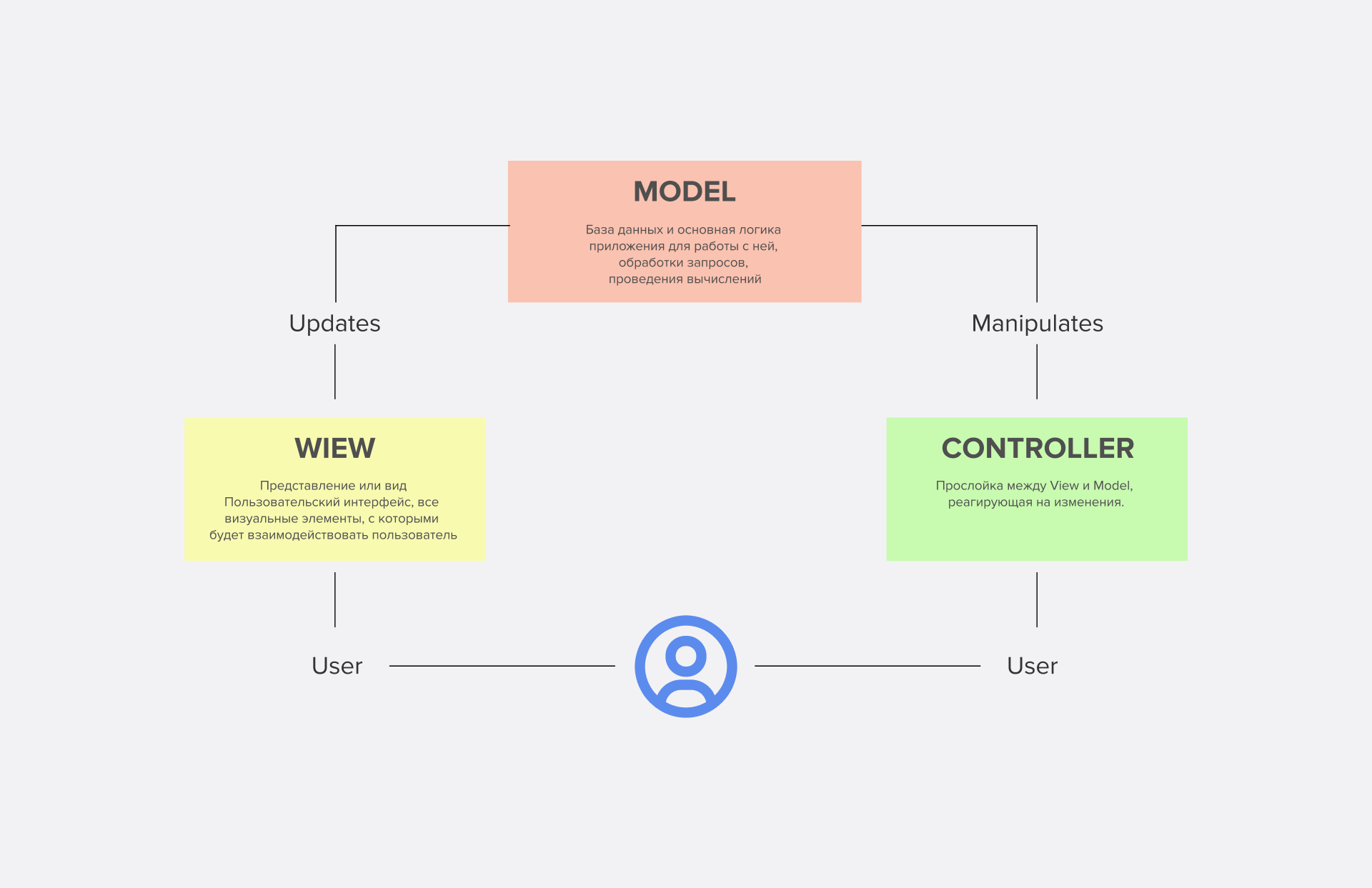MVC
MVC is the very first of the application architecture design patterns. Like all the others that appeared on its basis, it is used to organize code and divide it into functional blocks for different tasks. MVC has three components responsible for business logic, GUI, and application data.
Database and basic program logic for working with it, processing queries, performing calculations, etc;
user interface, all visual elements with which the user will interact;
a layer between View and Model that responds to changes.
In the MVC pattern, the controller and the view depend on the model, but the model does not. The controller contains the logic for getting data from the model and passing it to the view. The Controller passes requests generated by the View Model, where all data is stored. The model changes according to the request. The view "learns" how it needs to change because it is subscribed to model events and displays the new data.
Example: you enter text in a field in the program (in the View) and click the "Save" button. Interaction with the button triggers a command to be sent to the Controller, which receives the data and makes changes to the Model. The Model is updated, the View learns about it and changes, and you see, for example, a pop-up window with the text "Saved".
Any architecture pattern involves the creation of different code blocks and interaction between them. MVC is a classic solution for separating the structural blocks of a program. Its use increases the efficiency of work at the development stage and further in scaling and maintenance. Its clear separation makes it a good choice for large projects that will involve many specialists. Especially if the program has a complex graphical interface.
Several teams can work on the code divided into blocks, and ready-made solutions can be integrated as needed. At the same time, MVC saves development resources by allowing you to use the same data to display views on different types of devices.
This pattern is loved because it is "convenient and beautiful" and does an excellent job of separating, which increases development efficiency both at the start and during project scaling. Even global changes to the data structure and interface logic will be easier, and finding and fixing errors will be even easier. Using MVC increases the manageability and predictability of the application, regardless of its scale and complexity.
Your developers will know which design pattern is best for the project as soon as you tell them what your app should do. Even MVC itself has several ways to implement the architecture. Which one is best for you depends on the scale and specifics of your project. It's better to listen to developers and analysts who will see even non-obvious advantages. In any case, MVC will make it easier to work with a complex graphical interface and simplify the scaling and maintenance of your application.


